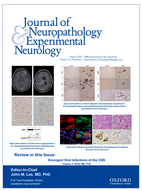 Myopathies linked to the FLNC gene are highly varied in their expression. Initially described in the context of myofibrillar myopathies alone, these genetically determined neuromuscular diseases have an increasingly wide phenotype spectrum, especially since the application of high-throughput sequencing (NGS) to atypical clinical pictures with no molecular signature.
Thus, mutations in the FLNC gene, which codes for filamin C, have been reported in distal myopathies and in isolated cardiomyopathies. Filamin C is an intermediate microfilament, just like desmin, vimentin and other cytoskeletal proteins.
Myopathies linked to the FLNC gene are highly varied in their expression. Initially described in the context of myofibrillar myopathies alone, these genetically determined neuromuscular diseases have an increasingly wide phenotype spectrum, especially since the application of high-throughput sequencing (NGS) to atypical clinical pictures with no molecular signature.
Thus, mutations in the FLNC gene, which codes for filamin C, have been reported in distal myopathies and in isolated cardiomyopathies. Filamin C is an intermediate microfilament, just like desmin, vimentin and other cytoskeletal proteins.
In an article published in June 2020, researchers at the Institute of Myology in Paris reported an original observation of a 49 year old female patient complaining of progressive motor deficit that had been progressing for around 20 years, predominantly in the hands. Cardiac and respiratory problems appeared during the progression of her disease, as they did in her daughter, who also had the disease. Creatine phosphokinase level was normal and the electromyogram was clearly myopathic. MRI imaging showed that lesions had spread further than just in the upper limbs. The mutation found in the FLNC gene met all the necessary pathogenicity criteria and cosegregated in the family in an autosomal dominant fashion. To their great surprise, the researchers identified large numbers of rods (nemaline) in a muscle sample taken from this patient at 60 years of age.
